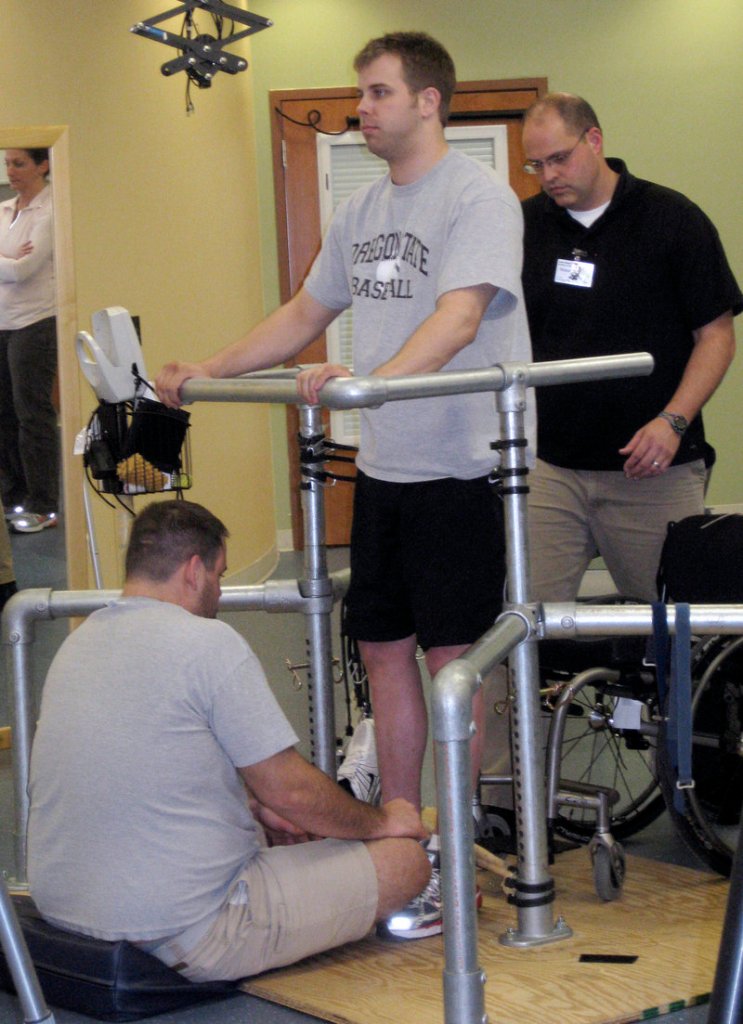LOS ANGELES – A 25-year-old Los Angeles man paralyzed from the waist down after being hit by a car in 2006 has regained the ability to stand, take steps on a treadmill and move his hips, knees, ankles and toes voluntarily as a result of an experimental treatment developed at the University of California, Los Angeles and the University of Kentucky.
Rob Summers has also regained some bladder and sexual function after intensive rehabilitation and two years of electrical stimulation to his damaged spinal cord with a device normally used for pain relief, researchers reported Thursday.
His recovery “remains unprecedented in spinal-cord injury patients,” who until now have faced a lifetime of paralysis, researchers from the University of Zurich wrote in an editorial accompanying the report in the journal Lancet. “We are entering a new era when the time has come for spinal-cord-injured patients to move.”
The new treatment is “a very exciting discovery” that can probably be used to help 10 percent to 15 percent of people with spinal-cord injuries regain some use of their legs, added Dr. John McDonald, director of the International Center for Spinal Cord Injury at the Kennedy Krieger Institute in Baltimore, who was not involved in the research. For those people, “it has the potential to make a dramatic difference in their lives.”
To achieve this milestone, researchers bathed Summers’ spinal cord with a mild dose of electricity using a device that is normally used to treat chronic pain. The electrical stimulation apparently primed his nervous system to respond to signals from his limbs, allowing him to rise out of his wheelchair.
“To everyone’s disbelief, I was able to stand independently the third day we turned it on,” said Summers, who was a baseball player at Oregon State University in Corvallis at the time of his accident. He completely supported himself, but needed some help with balance.
The treatment, devised primarily by UCLA neurobiologist V. Reggie Edgerton, is designed to activate a patient’s spinal nerves just enough to make them responsive to sensory signals coming from the legs.
Send questions/comments to the editors.



Success. Please wait for the page to reload. If the page does not reload within 5 seconds, please refresh the page.
Enter your email and password to access comments.
Hi, to comment on stories you must . This profile is in addition to your subscription and website login.
Already have a commenting profile? .
Invalid username/password.
Please check your email to confirm and complete your registration.
Only subscribers are eligible to post comments. Please subscribe or login first for digital access. Here’s why.
Use the form below to reset your password. When you've submitted your account email, we will send an email with a reset code.